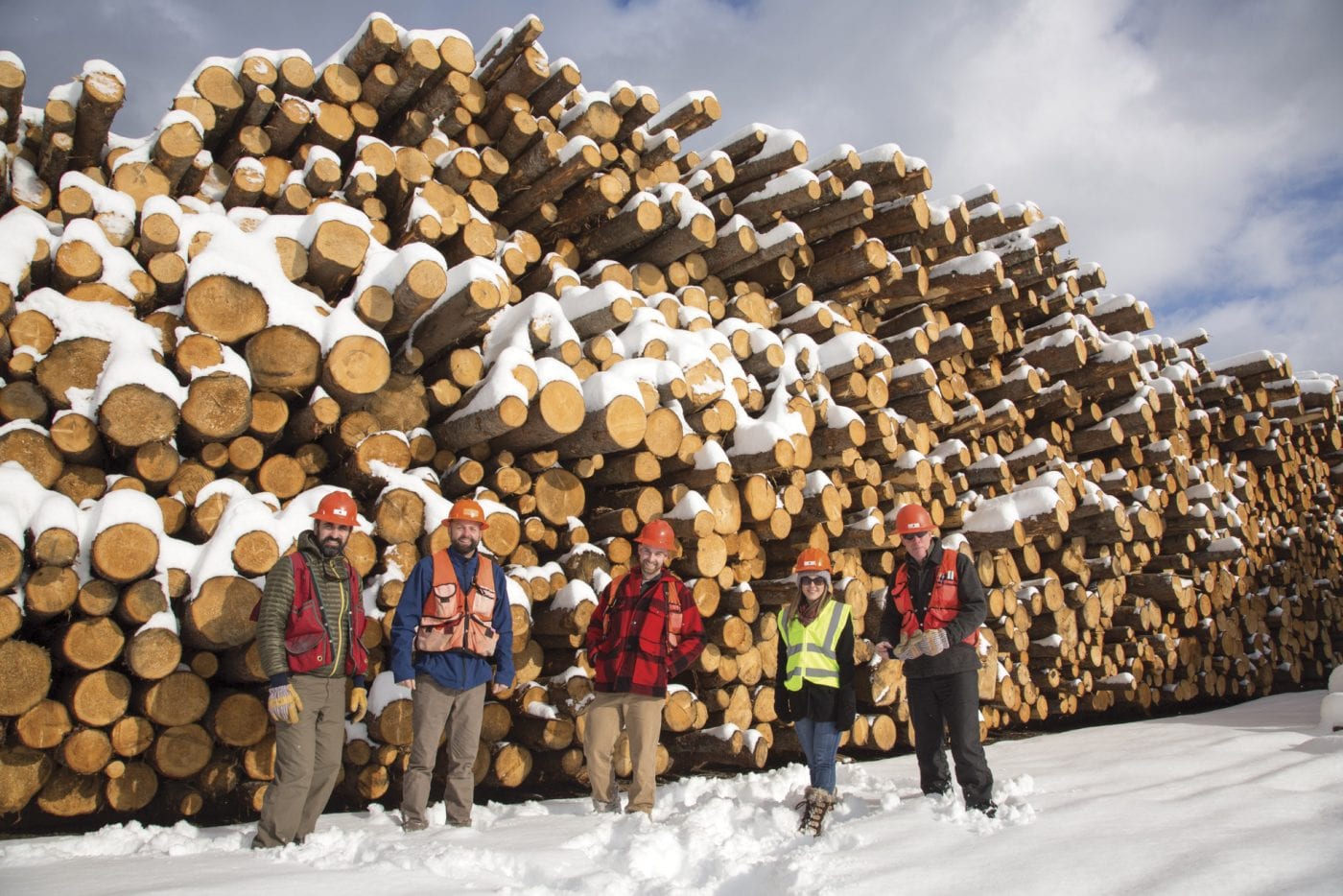The Adirondack park represents, to most of us, an idyllic haven composed of “forever wild” forests, lakes and mountains. In many parts of the park, this is in-fact the case. Aside from sparse dirt roads, rare hiking trails and the occasional cabin, about 2.6 million acres within the Adirondack park must stay “forever wild”. The other side of the coin however, represents privately owned tracks of land within the park. The majority of private lands within the Adirondacks belong to small-scale landowners, most of whom reside within the 105 small towns and villages within the park. On these smaller tracks of land, some landowners try their luck with small scale farming or livestock raising.
Another large portion of the private land is owned by large logging companies. The two largest players in the industry are a Mississippi company called Molpus Woodlands Group and Lyme Timber, based out of New Hampshire. While these companies must abide by a slew of tight regulations set in place by the park and State, they still have annual quotas that need to be made. Combined, these two groups alone own approximately 500,000 acres of land. The timber industry in the state of New York directly employs at least 40,000 people and indirectly employs another 55,000 workers. Many of the workers directly employed by the timber industry live in the Adirondack park and rely on the industry to retain a livelihood. Unfortunately, this livelihood which sustains many small towns is dependent on the destruction of a mixture of secondary and tertiary growth. Most forested areas used for timber are regulated and watched carefully so that regrowth occurs faster than logging. In some areas unfortunately, regrowth barely occurs at a 1 to 1 ratio.

Wood Products Development Council Of New York
The mining industry, which is no longer a major player in the Adirondack economy, once represented a great deal of economic possibility for both new companies and many migrant workers. Immigrants fresh of the docks in New York were often recruited, despite nationality which, for a time, added a great deal of diversity to the park. Unfortunately, when the state decided to close down the mining industry in the state, many of these workers were forced to return to the city in search of work. Thus, much of the diversity left with them. Many of those who stayed behind joined the logging industry.
Alongside logging, the tourism industry in the Adirondack park is a massive source of economic activity. Ski mountains, hotels, boutique shops, rafting, fishing, hunting and restaurants all depend heavily on tourists from all over. Most of the tourism industry relies on the Winter and Summer months to produce enough cashflow to last through mud season. Each year, more than ten million tourists visit the park and more importantly, spend their money! The tourism industry in the park represents a whopping 17% of the labor force, compared to only 9% in the city.
Again however, the question of “forever wild” arises. Tourists dont only bring money, they also bring their crap. Trash being left on trails, destruction of natural lands, and increased need of infrastructural maintenance are all results of so many folks visiting areas that simply arent built for thousands of people at a time. During the height of the Covid-19 pandemic, local officials considered limiting the number of people entering the park and using trails because maintenance could not keep up-especially with an endangered labror force.
New York Regional Tourism Employment Rates
Heller, Marc. “Timber for Profit: Clearcutting Fight Erupts in Adirondacks.” Subscriber.politicopro.com, E&E News, 29 Oct. 2020, 1:42PM, subscriber.politicopro.com/article/eenews/1063717351.
Tourpro. “Tourism Impact in the Adirondacks.” Adirondack Base Camp, 30 Mar. 2011, www.adirondackbasecamp.com/2008/09/tourism-impact-adirondacks/.
“Economic Value of New York’s Forest Resource.” New York State Wood Products, Wood Products Development Council, woodproducts.ny.gov/economic-value-new-yorks-forest-resource.
Rowland, Tim. “Molpus Woodlands Is the Park’s Largest Landowner.” Adirondack Explorer, 8 Feb. 2021, www.adirondackexplorer.org/stories/molpus-woodlands.
Depalma, Anthony. “Logging Is Part of a Plan to Preserve Adirondacks.” The New York Times, The New York Times, 29 Oct. 2007, www.nytimes.com/2007/10/29/nyregion/29adirondacks.html.

It’s interesting to think about the different land uses of the Adirondacks – true wilderness, small scale farming, livestock raising, cities and towns, and logging and mining companies. If I recall correctly, “Wandering Home” almost seemed to set up a dichotomy between the wilderness/pastoral small farms and everything else – when in reality the situation is much more complex. I wonder how taxation works for the two largest timber companies in the park – especially since they are both based out of states other than New York. Do you have any sense of how much they are taxed, or if those taxes specifically go back to the people of the park or the conservation/preservation of the land? I’m also curious 95,000 people that are directly and indirectly employed by the industry – would love to know more about their incomes, where they live, their educations, and their life histories. I feel like interviewing one of them could make a great final project for this class! What kinds of jobs do the indirectly employed do? I love the graph about tourism in New York – truly shows the power of the Adirondacks. What’s the difference between direct tourism and total tourism? Super informative post – nice work!